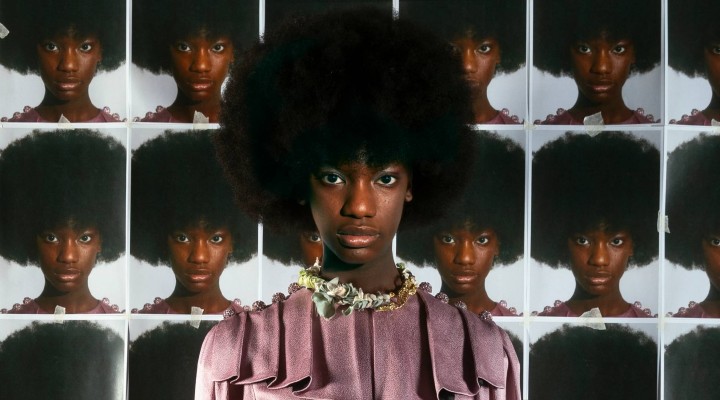Luxury Italian fashion house Gucci has broadened its online footprint to create a digital shopping concept, Gucci Vault. Led by creative director Alessandro Michele, the Vault offers a highly coveted range of vintage Gucci items hand picked by Michele and a team of archivists. The rare collection of fashion and accessories span a century of Gucci’s design history. These stunning pre-owned pieces have been carefully refurbished and customised by in-house artisans ready for its next chapte
pter. When shoppers purchase items from the Vault, they’re making way for the item to become part of a new contemporary narrative representative of today’s consumer.
The luxury resale market has been experiencing a steady increase as the stigma around owning high-end second-hand products diminishes. At the end of 2020, the market value was estimated to be $25-30 billion, with experts predicting an annual growth rate of 10-15 per cent over the next decade.
We’re seeing more premium brands embrace the secondary market and put a creative spin on the experience. Gucci has found a nice corner of the market connecting the past with the present in true Gucci style, appealing to a youthful audience via the most direct channel possible, online.
At a press event last year, Michele described Gucci Vault as “a multi-brand concept store. In real life, stores like these are difficult to find. And the ones we used to visit are no longer there – like Colette – and there are no new ones. But they are shrines of research, rather than shopping”.
However, Gucci Vault is not just home to vintage items from the archives, it’s also a stage for emerging designers to showcase their creations. The Vault is a stunning combination of old and new brought together under the Gucci roof.
The 13 designers from around the world include Ahluwalia, Bianca Saunders, Boramy Viguier, Charles de Vilmorin, Collina Strada, Cormio, Gui Rosa, Jordanluca, Rave Review, Rui Zhou, Shanel Campbell, Stefan Cooke, and Yueqi Qi. This lineup of talent brings a fresh take on modern fashion and jewellery, championed by Michele and Gucci.
With a name that suggests access to the most exclusive and elusive Gucci products, the Gucci Vault at first glance may seem like another online store. But the concept as it evolves,it hints at an elaborate and sophisticated move into the metaverse. The term ‘vault’ has become popular in the non-fungible token (NFT) space. An NFT vault is an online facility to securely store high value NFTs.
When you dip your toe in the NFT Twitter-sphere, chances are you will scroll into a rabbit hole. There are hordes of people passionately following NFT artists and project founders, eagerly joining Twitter Spaces and Discord Servers, wanting to be part of a tight-knit online community. So it comes as no surprise that a major collaboration between Gucci and NFT brand Superplastic has found its way into the Gucci Vault.
Supergucci
Together, Superplastic and Gucci are releasing a three-part series of physical and digital items starting February 1 via Gucci Vault and Superplastic websites. The first drop in the series includes ten NFTs, each one matched to a handmade ceramic sculpture designed by Gucci and Superplastic.
It’s anticipated the sculptures and NFTs will incorporate Gucci’s iconic branding, Superplastic’s vinyl toys and virtual influencers Janky and Guggimon. At the same time, the Gucci Vault will reveal another small collection of vintage pieces, and upon purchase, each item will be shipped in unique packaging.
The lingering question is: why would a luxury fashion brand partner with a company that creates animated celebrities, vinyl toys and digital collectibles? The answer lies in popular culture. Superplastic and its troublesome synthetic duo Janky and Guggimon, collectively boast an impressive Instagram following of over 3.6 million fans since it launched in 2018.
Superplastic’s loyal fanbase follow them closely, trading rare vinyl collectibles, spending cryptocurrency on limited NFT drops while being entertained by the NSFW adventures of Janky and Guggimon on social media. This audience is Gucci’s future customer in the metaverse.
Luxury fashion houses are in pursuit of aligning with highly successful pop culture brands, as the race to the metaverse heats up. The marketing landscape in virtual environments is completely different. Social media and consumer generated content were an introductory course in creating two-way interaction between brands and consumers. Digital marketing now includes community engagement via online platforms such as Clubhouse, Twitter Spaces, and moderating Discord servers.
The overarching theme for Gucci Vault of old meets new is being interpreted in multiple ways, which makes for an enticing shopping experience. For visitors, Gucci Vault feels familiar as the product offering throws it back through the last 50 years of vintage looks. Then an abrupt juxtaposition switches the viewer into a world of digital vinyl toys and the rebellious antics of virtual celebrities.
It’s an early formation of the Gucci lifestyle lived online, preparing for the metaverse. Everything you see and touch from the Vault has been Gucci-fied. The Vault cleverly ensures that nothing in Gucci’s past gets left behind. Its design history is very much a significant part of the story today, encouraging its shoppers to shape a new future while being entertained, consuming content and engaging with others in a virtual Gucci world.

